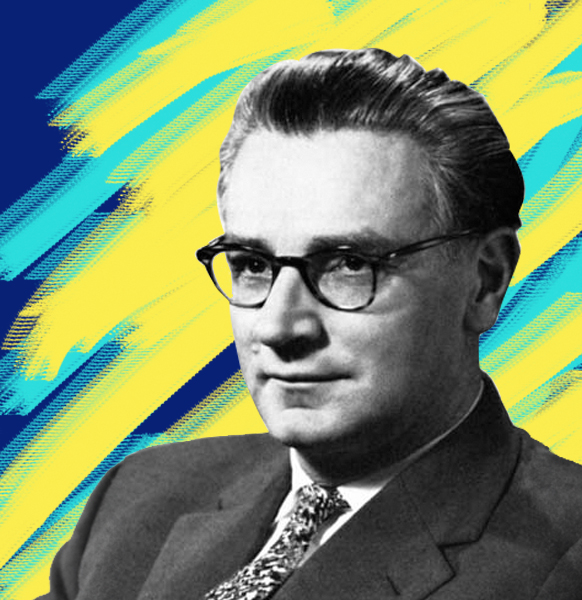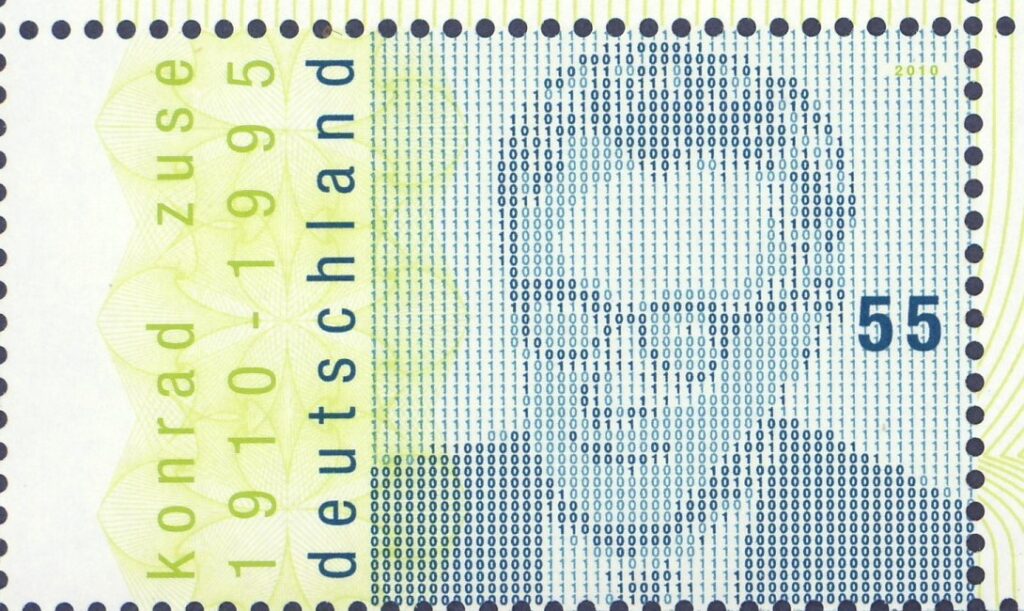In 1941, engineer Konrad Zuse presented the Z3 (Zuse 3) in his workshop in Berlin. This invention, the world’s first functional, fully automatic, and programmable computer, was unjustly overlooked at the time. Today, on his birthday, we reflect on Zuse’s revolutionary invention and its impact on information technology.
About Konrad Zuse
Konrad Zuse was born on June 22, 1910, in Berlin-Wilmersdorf. In 1923, his family moved to Hoyerswerda, where he graduated from high school four years later. He then began studying mechanical engineering at the Technical University of Berlin-Charlottenburg but switched to architecture and ultimately to civil engineering. He graduated with a degree in 1935.
1910, in Berlin-Wilmersdorf. In 1923, his family moved to Hoyerswerda, where he graduated from high school four years later. He then began studying mechanical engineering at the Technical University of Berlin-Charlottenburg but switched to architecture and ultimately to civil engineering. He graduated with a degree in 1935.
The vision of a mechanical brain – development of the Z1 and Z2
During his civil engineering studies, Zuse found static calculations increasingly tedious. This led him to conceive of a “mechanical brain” that could calculate faster and more accurately than humans. The Z1, Zuse’s first attempt to automate complex calculations, was built in his living room from over 12,000 metal parts. However, this machine was error-prone and unreliable due to its entirely mechanical design, which often jammed.
Building on this computer, Zuse developed the Z2, completed in 1939. This version used electromechanical relays instead of mechanical switches which significantly improved reliability. In 1940, he presented the Z2 prototype to Günther Bock, the technical director of the German Aeronautical Research Institute¹, who subsequently funded the development of the Z3.
Z3 – The world’s first functional computer
In 1941, Zuse achieved a breakthrough with the Z3. The Z3, a cabinet-sized device that sounded like a tractor, had a memory capacity of 64 words and a clock frequency of 5 Hertz. The machine operated fully automatically in binary, used floating-point numbers, and could read and execute commands from punched filmstrips. These technical innovations enabled programmability and the execution of various mathematical calculations, setting Zuse’s development apart from earlier machines. A division or multiplication took about 3 seconds.
In practice, the Z3 was used to calculate aircraft wing surfaces to investigate aeroelastic flutter, which caused combat aircraft crashes. Nevertheless, the Z3 was not deemed “crucial to the war effort” and was never put into regular operation. In 1943, the Z3 was destroyed in a bombing raid during World War II.
Post-war years and the Z4
At the end of the war, Zuse fled from the Allied bombings in Berlin to Bavaria, where he built the Z4 in the following years. In 1949, Professor Eduard Stiefel, head of the Institute for Applied Mathematics at ETH Zurich, became aware of the computing machine and signed a rental agreement for its use. The Z4 was intensively used at ETH Zurich and was the only functioning computer in Central Europe at the time and the world’s first commercial computer.
Further developments and successes of Zuse KG
In the same year, 1949, Konrad Zuse founded the company “Zuse KG” and developed more computers with successive type designations. The Z5 calculated lenses for Leitz, while the Z11, still using relay technology, was sold to the optical industry, universities, and land consolidation authorities. With the emergence of electronics, the Z22, Zuse’s first vacuum tube computer, was introduced in 1955. By 1967, Zuse KG had built a total of 251 computers. The rapid growth overwhelmed the company, leading to difficulties. In 1964, Zuse retired from active company management, and in 1967, the firm was acquired by Siemens.
The lasting significance of Konrad Zuse
Konrad Zuse passed away in 1995. He received numerous honors during his lifetime and beyond, including honorary doctorates from prestigious universities, the Grand Cross of the Order of Merit of the Federal Republic of Germany, and the Harry H. Goode Memorial Award. The Konrad Zuse Center for Information Technology in Berlin, several schools, streets, and a media center are named after him. On his 100th birthday in 2010, exhibitions, lectures, and workshops were held across Germany, and the “Deutsche Post” honored him with a special stamp and commemorative coin.
media center are named after him. On his 100th birthday in 2010, exhibitions, lectures, and workshops were held across Germany, and the “Deutsche Post” honored him with a special stamp and commemorative coin.
Konrad Zuse demonstrated with his invention that automatic, programmable computing systems were possible, laying the foundation for the development of modern computers. Without the Z3 and the technologies implemented in its construction, today’s computer technology would be unimaginable. The ideas and technologies Zuse incorporated into the Z3 have significantly influenced computer technology development and remain essential today. Museums and exhibitions with replicas of the Z3 continue to commemorate Konrad Zuse’s contribution to computer history.
Fun fact
Konrad Zuse was artistically active since his youth. “I never studied art, but I didn’t study computer science either”, he said of himself. His works include oil paintings, chalk drawings, and linocuts. His last painting was a portrait of Bill Gates, which he presented to Gates at CeBIT in 1995.
>> Other articles you might be interested in:
Heinz Nixdorf: How he turned Paderborn into a hub for information technology
When ones and zeros were still holes: Herman Hollerith and the invention of the tabulating machine
- 40 Years – 4 Perspectives: G&D through Four Different Lenses - 16. December 2025
- Trusted. Improved. VisionXS 2.0 - 15. October 2025
- bluedec™ – Our Video Compression for Control Rooms, Now Even More Powerful - 2. September 2025

